Update: Several of our readers have reached out to us about the title of this post, and I wanted to make sure that their voices are heard and that we take the opportunity to begin a conversation about it by addressing their concerns. Here is one such email we received, one that I think makes some important and valuable points:
A recent article on your website titled “Chicks as Dicks: On Life is Strange and the Representation of Women in Detective Fiction” by Bianca Batti comes across poorly as a trans woman. Whether it was intended or not “Chicks as Dicks” is uncomfortably close to the objectifying and sadly common phrase “chicks with dicks”. Trans women are already treated poorly by our representation in video games so it’s somewhat more hurtful to see that bleeding into games journalism, especially on article written by someone who frequently tackles issues of gender in gaming.
I’d first like to say that I’m really glad the NYMG community is one that often seeks to proactively and critically engage with us about the topics we discuss and the manner in which we discuss them; in doing so, it allows us to confront these issues head-on, to engage with each other more fully, and to constantly work to do better ourselves. Sometimes it’s messy. Often it’s difficult. And, in this case, it’s something for which I’m thankful—because the last thing I want to do is alienate members of our readership by making them feel disenfranchised or exploited. So I want to apologize if the title of this post made any of our readers feel that way, and I want to extend my thanks to those of you who have already pointed this possibility out for doing so.
I think it’s also important to discuss the context and connotation surrounding the title in more detail. The phrase “chicks as dicks” is meant as a reference to the traditional figure of the private detective—colloquially referred to as a “dick”—in the detective fiction genre. While the exact origin of this colloquialism isn’t known definitively, there are a few different theories floating around. One such theory is that it stems from a Romanian word that means to look or to see. Another theory postulates that it stems from Dick Donovan, the pseudonym Joyce Emmerson Preston Muddock used for the detective stories he published in the late 19th and early 20th centuries. Thus, the etymology of the word dick, as it is used within the detective fiction genre, brings to mind issues of authorship and agency—who does the writing and who does the looking.
This is the context I wanted to explore in this article, a context I was hoping to highlight and critique through the title as well. My goal was to critique the often masculinist and exclusionary lens of the detective genre and the manner in which this lens often problematically fetishizes, sexualizes, and exploits the female characters that exist within it, a lens that seems to be both perpetuated and subverted in Life is Strange (or, at least, in the episodes with which we’ve been presented so far).
But, perhaps, my own use of such terminology problematically perpetuates an exclusionary lens as well. Because while intentionality is one thing, reception is another, and it’s just as important to think about such things not just in the games that we write about but also in the ways that we write about them. And it’s important to think about who these conversations are for. And with. So, as much as a big part of me doesn’t want to, I’ve decided to leave the title as-is—as a reminder of all the complex social and cultural contexts surrounding a game and as a reminder of how important it is for us to all work together to really think about how we can constantly be working to do better.
Warning: Spoilers for episode four of Life is Strange follow below. Big ones.
I played the fourth episode—“Dark Room”—of Life is Strange this week, and as a result, I’ve been thinking a lot about the manner in which Life is Strange draws from the narrative conventions of the detective fiction genre. I’ve been thinking about femme fatales, teenage detectives, women as crime-solvers, women as victims. I’ve been thinking about Max Caulfield and Robin Griffin and Veronica Mars, and I’ve been thinking about Rachel Amber and Laura Palmer and Rosie Larsen. I’m not the only one making these connections or thinking about the game’s influences. But I think it’s also important to think about some of the implications of these connections and, since the game heavily features female characters and female relationships, to think about the manner in which such narrative connectivity affects the way we might think about the representation of women in such texts.
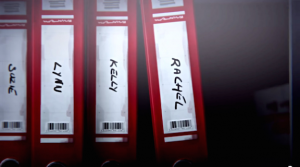 In “Dark Room,” we finally gain more insight into the nature of victimization that has been occurring in Life is Strange. Rachel Amber, we come to find out, did not run away, she did not escape Arcadia Bay, but, rather, she was killed, her body buried unceremoniously in the junkyard. But perhaps what is most telling about all this is that Rachel Amber is not the only victim in the game—indeed, she is only one binder among the collection of literal binders of women in the underground bunker, binders that contain images of women drugged and bound, the prey of the photographic predator. The image of the cabinet full of such binders, a cabinet full of photos that suggest implied torture, forced docility, and sexual exploitation, seems to be a poignant encapsulation of both the prevalence and homogeneity of female victimization in murder mysteries and whodunits. And as Victoria’s empty binder seems to indicate, no woman is safe, all women are potential victims, and it is perhaps only a matter of time before any woman’s binder becomes full of the evidence of trauma and abuse.
In “Dark Room,” we finally gain more insight into the nature of victimization that has been occurring in Life is Strange. Rachel Amber, we come to find out, did not run away, she did not escape Arcadia Bay, but, rather, she was killed, her body buried unceremoniously in the junkyard. But perhaps what is most telling about all this is that Rachel Amber is not the only victim in the game—indeed, she is only one binder among the collection of literal binders of women in the underground bunker, binders that contain images of women drugged and bound, the prey of the photographic predator. The image of the cabinet full of such binders, a cabinet full of photos that suggest implied torture, forced docility, and sexual exploitation, seems to be a poignant encapsulation of both the prevalence and homogeneity of female victimization in murder mysteries and whodunits. And as Victoria’s empty binder seems to indicate, no woman is safe, all women are potential victims, and it is perhaps only a matter of time before any woman’s binder becomes full of the evidence of trauma and abuse.
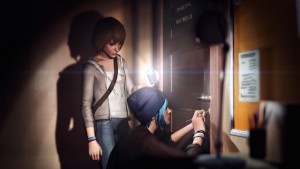 But Life is Strange doesn’t simply feature women as the victims of crime but also women as the solvers of it, for Max and Chloe, much like Scully and Mulder, know the truth is out there (okay, I apologize for the corniness of that X Files reference). Maybe this is where Life is Strange begins to complicate the narrative conventions and archetypal representations of detective fiction, in that Max and Chloe, our female crime-fighting duo, are framed as the proactive agents of justice, not the passive receivers of pain. Yet, even with Max’s time-altering powers, they’re not invulnerable superheroes, and as we see in episode four’s concluding scenes, even Max and Chloe aren’t outside the reach of those who prey on the young women of Arcadia Bay.
But Life is Strange doesn’t simply feature women as the victims of crime but also women as the solvers of it, for Max and Chloe, much like Scully and Mulder, know the truth is out there (okay, I apologize for the corniness of that X Files reference). Maybe this is where Life is Strange begins to complicate the narrative conventions and archetypal representations of detective fiction, in that Max and Chloe, our female crime-fighting duo, are framed as the proactive agents of justice, not the passive receivers of pain. Yet, even with Max’s time-altering powers, they’re not invulnerable superheroes, and as we see in episode four’s concluding scenes, even Max and Chloe aren’t outside the reach of those who prey on the young women of Arcadia Bay.
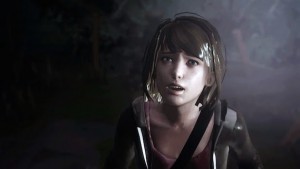 As such, the latest episode of Life is Strange seems to both perpetuate some problematic representations of women in detective fiction while it, at the same time, seems to transgress others. It seems that the game maintains the archetypal representation of violence perpetrated against women as being sexualized, exploitative, and subjugating in nature. But it also affords the women within the narrative some sort of voice, at least, in part through the fact that characters like Chloe, Max, Victoria, and Kate are all portrayed as complex (and often flawed) individuals and through the fact that these complicated women are all able, at some point, to come together and help—and even save—each other.
As such, the latest episode of Life is Strange seems to both perpetuate some problematic representations of women in detective fiction while it, at the same time, seems to transgress others. It seems that the game maintains the archetypal representation of violence perpetrated against women as being sexualized, exploitative, and subjugating in nature. But it also affords the women within the narrative some sort of voice, at least, in part through the fact that characters like Chloe, Max, Victoria, and Kate are all portrayed as complex (and often flawed) individuals and through the fact that these complicated women are all able, at some point, to come together and help—and even save—each other.
But I find myself sometimes wondering what the story would’ve been like if it wasn’t just women who needed saving in the game, if it wasn’t just young women who were preyed on by older men. I find myself thinking this about Life is Strange not just in relation to its role as a video game but also in relation to its role as a sort of detective narrative. For, in thinking about both genres, while we often see male heroes like Agent Dale Cooper solve the mystery of Laura Palmer’s death, or while we see female heroes like Lara Croft save her female friend Sam, we don’t often see female heroes save victimized men. That’s not to say that we don’t see it occasionally, but it is to say that we don’t see it enough.
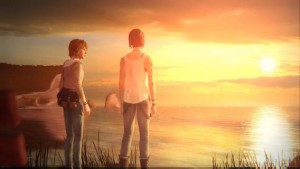 That’s also not to say I don’t like the game (because I do). I think Life is Strange is doing some fascinating and ambitious things with time, choice, character development, and female relationships—and the manner in which these things intersect—and perhaps these aspects of the game will allow it to explore the complexities of victimization, heroism, trauma, and the nature of good and evil in even more interesting ways in the fifth and final episode. And while I appreciate the game for the fact that it’s making the effort to engage with all these different themes, I think it’s also important to think about both the problematic and transgressive representations that it upholds in order to consider the manner in which Life is Strange converses with the detective stories that came before as well as those that have yet to be. Because doing so helps us think about how to keep crafting even better mysteries to be solved, codes to be cracked, and days to be saved.
That’s also not to say I don’t like the game (because I do). I think Life is Strange is doing some fascinating and ambitious things with time, choice, character development, and female relationships—and the manner in which these things intersect—and perhaps these aspects of the game will allow it to explore the complexities of victimization, heroism, trauma, and the nature of good and evil in even more interesting ways in the fifth and final episode. And while I appreciate the game for the fact that it’s making the effort to engage with all these different themes, I think it’s also important to think about both the problematic and transgressive representations that it upholds in order to consider the manner in which Life is Strange converses with the detective stories that came before as well as those that have yet to be. Because doing so helps us think about how to keep crafting even better mysteries to be solved, codes to be cracked, and days to be saved.


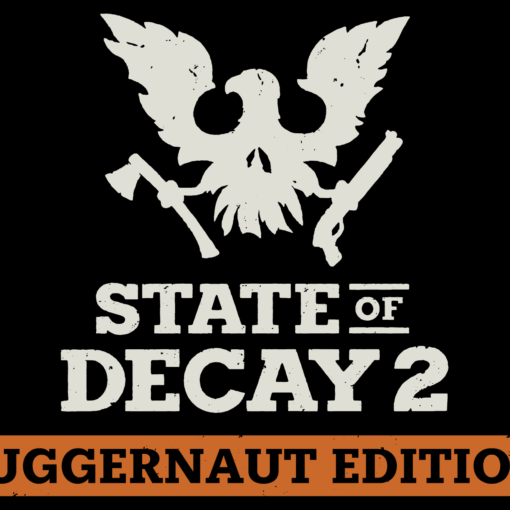
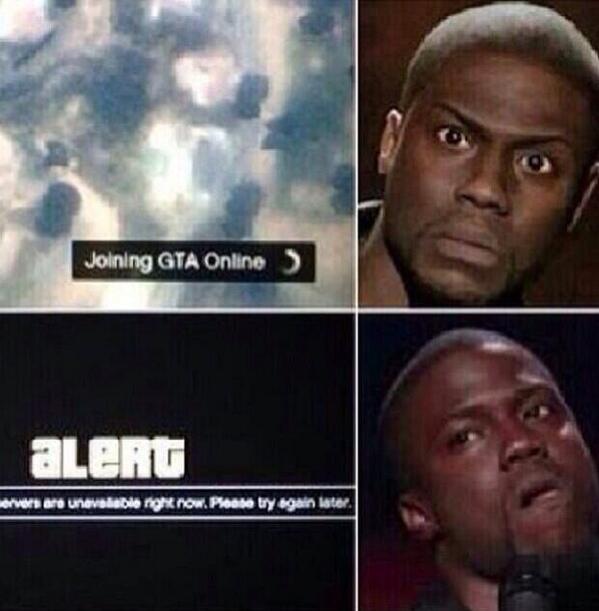

One thought on “Chicks as Dicks: On Life is Strange and the Representation of Women in Detective Fiction [UPDATE]”
By investigating the investigator, Ms. Batti has stumbled upon a cache of mysteries as to why gender, the most fluid of human definitions, embryonically and culturally, effronts our sense and sensibility in our acceptance of the “female” protagonist in fiction. Drew she on a more adolescent analysis, the arc of her blog would have more of a curve than a sharp edge. Instead she inserts her own original insights, probing the limits we tolerate in our attachment to character. Her diminution of the fictional female character and her truncation of the character’s activity, in title, leads us into a quadruple entendre, woman as child, man as activity, gender as genitalia, challenging chauvinistic porcine conventions that are all to often the creed of the craft of games. Her postings on the web, I believe, are not a practice to deceive, but words to what games can achieve, for like Charlotte, she can see the potential in games, Wilber.